




























































By M ichele L erner The Washington Post
One of the most important steps home buyers can take — especially first-timers — is to have a thorough inspection before they finalize their purchase. Whether you have plenty of experience from owning a home and understanding its systems, or you’ve always relied on your landlord to fix any issues, it’s best to know the quirks and potential problems of any property to avoid starring in your own version of the 1980s movie “The Money Pit.”
Take this quiz to see if you know what to do before, during and after a home inspection.
1: The sellers said they want to be in the house during a home inspection to answer questions. Should you let them?
No. “The home inspection is an opportunity for the buyer to gain valuable insight into the condition of the home from their home inspector,” said Anslie Stokes, a Realtor with Corcoran McEnearney in Washington.
“Having the seller hovering around will not help the process. But a seller should make accessing the roof, main water shut off, break panel, etc. as clear as possible.
And both the seller and listing agent should be readily available by phone for questions.”
2: Your home inspector said the dishwasher is old and won’t last for more than a year or two. Can you ask the sellers to replace it?
No. “Don’t be silly,” said Morgan Knull, an associate broker with RE/Max Gateway in Washington. “A home inspection is not a license to renovate at a seller’s expense.”
However, Stokes said it depends on what your contract
says.
“If your inspection contingency allows you to request repairs or credits in lieu of repairs then you can certainly ask, but you should likely expect pushback if the dishwasher is still functioning properly,” Stokes said.
3: The home inspector found evidence of a leak under the bathroom sink. Can you ask for records of repairs?
Yes. “There is generally no prohibition on asking for repair records but also generally no obligation on a seller’s part to provide them,” Stokes said. “That being said, transparency builds trust so ideally the seller would be open to providing any information that can help alleviate concerns.”
Knull recommended asking the inspector to use a moisture meter to detect any active moisture presence under the sink.
4: The home inspector won’t climb onto the roof. Do you need to hire a separate roof inspector?
No. “Sometimes accessing a roof isn’t a possibility for an inspector weather, roofing types and association rules prevent us from walking many roofs,” said Andrew “Drew” McNeill, owner of D.C. Home Authority, a home inspection service in D.C., Maryland

and Virginia. “However, that doesn’t mean an inspector can’t assess the roof and give valuable information as to age, type and average life expectancy.”
Knull suggested that the inspector buy a drone.
“Or borrow one from a teenager,” he said.
Although it may not be necessary, if your contract allows for it and you’re worried about the roof, you can hire a roofing inspector or company for an additional assessment, Stokes said.
5: You’re buying a historic home that you plan to renovate. Can a home inspector check the electrical wiring to guarantee the house is safe to live in?
No. “A good home inspection will include a review of the electrical system and note any visible defects or concerns,” Stokes said. “It cannot, however, provide a guarantee that the house is safe to live in because the scope of the inspection is largely limited to what the inspector can visually see or test with limited tools.”
On the other hand, McNeill said inspectors can get a general idea about the quality of the electrical
system.
“Home inspectors cannot see through walls any better than you can, however by looking at the main panel and the sub-panels to assess wiring types and workmanship — and by testing the system — we can generate a pretty good idea as to whether the system has been updated,” McNeill said.
6: The home inspector found a crack in the foundation. Does that mean you should give up the house?
No. “Cracks in foundations can be concerning, or not that big of a deal,” McNeill said. “It depends upon the size and type of the crack. If it is one of concern, generally inspectors will suggest a structural engineer to come
for further investigation and evaluation.”
What you do next depends on how much you like the house, Knull said.
“The next step for buyers is a costly structural analysis to determine the cause and correction of the crack,” he said.
7: The home inspection report said that some of the pipes visible in the unfinished basement don’t have any insulation around them. Is that a problem the sellers must fix?
No. “It’s not a ‘problem’; it’s a discretionary home improvement that a buyer can make after a purchase,” Knull said.
But, as with most home in-


Berkshire Botanical Garden presents the following upcoming programs: Friday, May 2, “May First Friday Passport Kitchen” with After Hours founder Kevin Kelly, from 5 to 7:30 p.m., is designed to bring excitement and invite curiosity about the culinary world. May’s program will focus on Latin cuisine with locally sourced ingredients. Cost is $100 members, $120 nonmembers; Saturday, May 3, “Botanically Infused Mixology.” Join mixologist Billy Jack to guide you through creating classic and seasonal beverages both with alcohol and without from 5 to 7 p.m. Explore harnessing the flavors of seasonal botanicals to create inspired and delicious drinks and learn techniques to make them at home for yourself or your friends. Billy Jack will provide instructions and take questions from students. This is a unique opportunity to learn from one of the Berkshires’ best and most creative mixologists. Cost $60 members, $80 nonmembers. To register or for more information, visit www. berkshirebotanical.org. Berkshire Botanical Garden is located at 5 West Stockbridge
cal community projects such as the downtown plantings, holiday greens, and scholarships.
The Hampden Garden Club will be holding their Memorial Day plant sale on May 26, from 8 a.m. to noon, rain or shine at Academy Hall on
Agawam Garden Club is planning its annual plant sale for Saturday, May 31. This year’s event will be held at the Historical Thomas Smith House, 251 North West Street, Feeding Hills and will run from 9 a.m.to noon. The sale
will include many perennials and shrubs all from members gardens and all a bargain. Because the plants are all grown locally in members gardens, they are well acclimated to the area. Proceeds from the sale go towards funding the club’s scholarship and providing educational programs for the year. Please check the club’s website for further information: agawamgardenclub. com.
The May meeting of the Wilbraham Garden Club will be held on Thursday, May 1 at the Parish Center of St. Cecilia Church, 42 Main St. A catered luncheon of soup and sandwich will be served. The cost is $9.50, call Norma at 413-596-8173. Guests are welcome. The speaker for the day will be Rebecca Sadlowski, owner of Rooted Flowers in Agawam. Her topic will be “Raised Bed Gardening for Cut Flowers.” She is donating a collection of annual flowers that we will raffle off to the lucky winner.
Monson Garden Club will hold its annual plant sale on Saturday, May 10 at Dave Grieve Park Gazebo on Main St. starting at 9 a.m. A wide selection of herbs will be available. Prices range from $3 and up. There will also be an assortment of special gift planters for Mother’s Day gifts. The plants come from members’ gardens, and members will be available to answer questions about the plants they enjoy. Proceeds from the sale are used for lo -



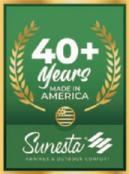
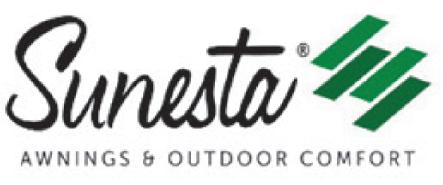




Lee Reich | In the Garden
MOST BENEFITS of compost are well-known: it takes out your “garbage,” it fertilizes your plants, it’s teeming with beneficial microorganisms, yadda, yadda, yadda. One too-often overlooked plus for compost is the thrill of discovery, discovery of things other than compost in the pile.
Discovery might range from the mundane to the sublime. Among the mundane discoveries is that glint of a lost kitchen fork as it emerges from within the chocolatey pile. Same for the favorite vegetable peeler or the lost stainless steel coffee strainer.
More towards the sublime end of the spectrum would be the dinosaur that surfaced as I was turning a pile a few years ago. A dinosaur! Yes, a small, plastic one that got there from who knows where.
More seriously sublime was the clutch of about
three dozen soft, white eggs about the size of quail eggs that came into view as my pitchfork lifted a clump of compost for turning into the adjacent compost bin.
Turns out they were snake eggs, those of a black rat snake. Some snakes give birth to live young, ready to crawl; black rat snakes lay eggs.
I put a few of those snake eggs into a terrarium along with some compost to see if they would hatch. For the uninitiated (me), it’s an eerie sight to see such a traditionally maligned creature emerge from such a welcome, traditional symbol of springtime rebirth. Baby black rat snakes are not black. Instead, bands of dark and light gray run across their backs.
Another time, while turning my compost pile, I accidentally disturbed a mating pair of black rat snakes in flagrante delicto.
White grubs occasionally turn up in my pile, but a
The Springfield Garden Club will hold its annual plant sale on Saturday, May 31 from 9 a.m. to noon at the Monkey House in Forest Park. Free entry to the plant sale is available at the Trafton Road entrance to Forest Park, 200 Trafton Road. A spring tradition and the Club’s major scholarship fundraiser, this is not the kind of plant sale that focuses on re-selling plants from wholesale growers. Except for a few donations from generous area garden centers, these plants are from members’ gardens or have been grown from seed specifically for the sale
This is a major fundraiser for their scholarship program. The Springfield Garden Club awards an annual scholarship of between $2,000 to
couple of days ago, one of my piles was home to at least two dozen of the C-shaped, creamy white grubs resting within. On the chance that they were grubs of Japanese beetles, I started picking them out and yelling “Quack, quack.” No, I hadn’t lost my mind; I was calling the ducks over for a treat of beetle grubs. They dashed for each tossed grub as it hit the ground.
And then a mouse, disturbed in my compost turning, made a dash out of the bin and across the lawn. A mouse in a compost bin is not that surprising, although the construction of my bins and my two dogs are pretty good at keeping mice at bay. (I make efforts to limit mouse populations because they can spread diseases such as hantavirus, salmonella, and lymphocytic choriomeningitis.)
One of the ducks took a break from grub hunting to grab the mouse which, judging from the chase the other
a graduating high school senior, undergraduate or graduate college student majoring in a full-time plant science or environmental studies program, such as horticulture, floriculture, landscape design, conservation, forestry, botany, agronomy, plant pathology, environmental control, land management or other allied fields. Using proceeds from past plant sales, the club has given out over $80,000 in scholarships to students in the last 30 plus years and we look forward to adding to that this year. For more information on the Springfield Garden Club events go to www.springfieldgardenclubma.org, or visit them on Facebook at https://www.facebook.com/ SpringfieldMAGardenClub.
On Saturday, May 3, from 8-10 a.m., the Allen Bird Club and the Friends of Fannie Stebbins Wildlife Refuge will co-host a Beginner Bird Walk within Longmeadow’s Fannie
ducks gave the lucky duck, is more of a gourmet duck food than even the grubs. Soon only the mouse’s tail was hanging out the duck’s beak, and then the mouse was down the gullet.
You might wonder: What’s with all this compost turning? Each of my compost bins holds a half to three-quarters of a ton of compost, each pile gets turned once, and I have a number of piles. Is it worth all that work?
Turning a compost pile lets me see how the process is chugging along. I keep a record of when a pile was built, and then months later, when it’s turned, how far along it is to being ready to use. After I turn a pile a make a guesstimate of percent decomposition, which is accurate enough for me to know about when it will be ready for spreading.
Turning a pile also lets me get a look at the compostto-be and then to make any adjustments that might be
Stebbins Memorial Wildlife Refuge. This program is open to the public free of charge. Participants should wear shoes appropriate for muddy areas, use tick and bug defense, and bring binoculars if possible. Some binoculars will be available to borrow. Meet at the sign on the corner of Bark Haul and Pondside Roads. Children are welcome but must be accompanied by an adult. This program will take place drizzle or shine, hard rain cancels.
For more information, call 860539-8777 or 413-530-7202.
On Saturday, May 3, the South Hadley Bike/Walk Committee will host a free, guided bird walk at River-toRange Trail, led by ornithologist Bill DeLuca, a senior Migration Ecologist with the National Audubon Society.
The accessible River-to-Range Trail, located along the Connecticut River at the Bachelor Brook-Stony Brook Conservation Area, has a hard
necessary. I’ll lightly hose down every few inches of turned material, enough to make the ingredients glisten. Anything looking exceptionally dry gets extra water. Occasionally, part of the pile is too wet. I fluff it up as I flip it over into the adjacent bin.
Parts of the pile might be compressed into a dense mat. Throwing it into the adjacent bin might be enough to loosen it up; if not, I pick at it with the tines of the pitchfork.
Turning the pile also mixes up the ingredients more than when the pile was built. Each part of the pile, then, gets new neighbors in the form of new ingredients and new microorganisms.
Turning a compost pile is not absolutely necessary, although it’s probably best to leave a bin intact longer if the pile isn’t turned.
On the other hand, I find turning a compost pile not only interesting, but also enjoyable and nice exercise.
pack surface covering a relatively flat 1-mile loop with seating benches at regular intervals. No prior birding experience is needed. Participants of all ages and new Trekkers are welcomed. No dogs, please.
The group will meet at 9:45 a.m. at the trailhead by the parking lot located at 240 Ferry St., just down the road from Brunelle’s Marina. Wear weather-appropriate clothing and safe footwear, and bring binoculars if you have them, along with water and walking poles, if desired. Some areas of the trail may be wet, so hiking footwear is preferable to sneakers.
All events are subject to change or cancellation due to weather or ground conditions and any decision to cancel the Bird Walk will be made by 6 p.m. on Friday, May 2. For more information or to check for a weather notification, visit the town’s website at southhadley.org/bikewalk.
Send items for Garden Notes to pmastriano@repub.com two weeks prior to publication.






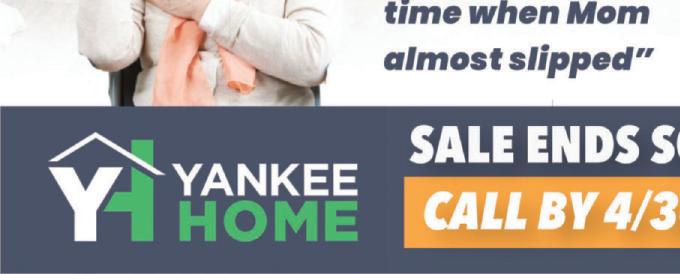




By Jolie K err
The Washington Post
IT IS NOT AN EXAG-
geration to say that we are obsessed with our pets. The American Pet Products Association projects that total U.S. pet industry expenditures will be $157 billion in 2025, up from $104 billion in 2020. And all that stuff we buy for Archie or Ladybug needs to be cleaned and maintained.
The good news is that most of your pet’s belongings are machine washable, making caring for them as easy as doing a load of laundry. Doing your pet’s laundry helps keep them healthy, most importantly, but it can also extend the life of their toys, outfits, beds and other belongings, saving you money and reducing waste. Crucially, regular washing will also keep those pettish odors at bay so that your house doesn’t smell like a kennel.
While machine washing your pet’s things is fairly straightforward, there are some differences in the way we do human laundry and the way we do animal laundry. Here’s how to do your pet’s laundry the right way.
How often to wash your pet’s belongings
There is no hard and fast rule about how often to wash Gordo’s or Bambi’s things — but you probably aren’t laundering them as often as is recommended. “Wash pet beds, blankets and clothing
at least once every one to two weeks, depending on how often your pet uses them and their activity level,” says Lisa Lippman, the director of virtual medicine at Bond Vet. She recommends washing collars, leashes and toys “monthly, or as needed, especially if they start to smell or show signs of dirt buildup.”
Before committing Daphne to a strict laundry schedule, however, be aware that laundering your pet’s things can have both positive and negative outcomes. “If your pet is having medical or behavioral issues, like excessive licking or chewing, cleaning their items can help address that,” says Michelle Bernstein, a forensic animal behaviorist. “But it’s important that we don’t create even more behavioral issues by removing a scent they feel comfortable with and replacing it with an unfamiliar scent.” She says to address any medical and behavioral concerns that result from washing your pet’s items with their veterinarian.
There are a number of pet accessories that can go in the washing machine, and those items aren’t limited just to Charlotte’s good party dress or Walter’s favorite hoodie. These are some of the items the experts we spoke to said can, generally speaking, be cleaned in the washer.
• Pet beds with removable covers.

• Sweaters, bandannas and other pet clothing.
• Booties.
• Soft toys.
• Some hard plastic or rubber toys.
• Collars and leashes made of washable materials.
• Blankets or throw covers.
“If the bedding isn’t machine washable, hand washing is okay,” says Jacqueline Brister, a veterinary consultant for Embrace Pet Insurance.
Cleaning your pet’s things in the washer requires some extra steps to ensure they come out clean and damage-free.
Check the care tag
Before washing any of your pet’s things, check the care tag for washing instructions. The symbol indicating an item is machine washable is a basin; the symbol for hand-washing is a basin with a hand in it; the symbol for do not wash is a basin with an X over it.
De-fur before washing
Remove as much fur from Milo’s belongings as possible before putting them in the washing machine by brushing off, shaking out or vacuuming fur and other debris. Running a rubber glove or sticky roller over be-furred items is another way to quickly remove fur from launderable items.
Pretreat stains
Pretreat visible stains before laundering. Most pet messes are bio-based protein stains, and are best treated using an enzyme stain treatment product.
Use protective washing bags
Place small items like booties or sweaters, and long, thin items like leashes, collars and bandannas in protective mesh washing bags to prevent them from getting lost, damaged, tangled or wrapped around other items in the load.
What type of detergent is best for a pet’s laundry?
“Choose a pet-safe,

fragrance-free detergent,” Lippman says. “Hypoallergenic options or detergents formulated for sensitive skin are excellent choices, as they minimize the chance of irritants affecting your pet.”
Lippman says to avoid detergents and other laundry products, including fabric softeners and scent beads, that contain strong fragrances or essential oils that might irritate your pet, as well as harsh chemicals, like bleach or ammonia, and dyes, which can cause allergic reactions or transfer to your pet’s fur.
“Watch out for products containing phenols, formaldehyde, ammonia or strong essential oils,” says Abel Gonzalez, a veterinarian with a focus on companion-animal health. “These can be particularly irritating or even toxic to pets.”
The best water temperature and washer cycles to use
Always check the care tag for instructions before washing, and follow the manufacturer’s guidelines regarding washer and dryer settings. Absent care instructions, Lippman says: “Use a gentle cycle for delicate items and cold or warm water to preserve the material. Dry on a low-heat setting or air-dry to prevent damage.”
If your pet has been sick, or their belongings are contaminated in some way, use heightened precautions, including washing items in the hottest water temperature they can tolerate, and putting them in their own load to prevent cross-contamination. It’s also a good idea to don disposable gloves when handling soiled pet belongings. Avoid the use of scented laundry sanitizers and chlorine bleach, which can irritate your pet’s sensitive skin and olfactory system.
A few extra tips for doing your pet’s laundry
The experts we spoke to offered tips for making washing your pet’s belongings more effective, as well as things to avoid when doing Chauncy’s laundry.
• Avoid overloading the machine to ensure items are thoroughly rinsed.
• If possible, run an extra rinse cycle to help remove detergent residue.
• Always make sure that pet items, including beds and toys, are completely dry to avoid the growth of mold and mildew.
• Regularly clean and perform other maintenance on your washer and dryer, such as vacuuming the dryer vent, to prevent fur from clogging the machines.
WHEN THE ARTS and Crafts movement thrived first in the British Isles and then in the United States, Vienna, Austria, had the Wiener Werkstatte (Vienna Workshop). Founded in 1903 by designer Josef Hoffmann, painter Koloman Moser and financier Fritz Waerndorfer, the workshop, which lasted until 1932, was a cooperative community of artisans making all kinds of decorative and functional products. Everything from tableware to postcards to furniture to jewelry was made from quality materials with innovative, artistic designs.
Like the modern designers that came later in the 20th century, many Wiener Werkstatte artists worked in multiple media. For example, Erna Kopriva studied architecture with Josef Hoffmann at the School of Arts and Crafts in Vienna, where she later taught printing.
However, the ceramics she made at the Wiener Werkstatte, where she worked from about 1919 to 1928, may be her most famous works. Their geometric shapes and vivid colors reflected the workshop’s modern sensibilities and fit the art deco style of the time. They are often valuable today. This one sold at Rachel Davis Fine Arts for $3,072, more than twice its high estimate.
Q. I would like to know the value of my old wooden duck toy. There is a mama duck with three ducklings on a string. Mama has a yellow-orange beak and a hat, and the babies have yellow beaks. All their heads turn.
A. You have a Quacky Family toy, which was made by Fisher-Price from about 1940 to 1958. Production was stopped during World War II. From 1940 to 1942, the ducks had rubber bills and were held together with rubber connectors that allowed children to change the order of the
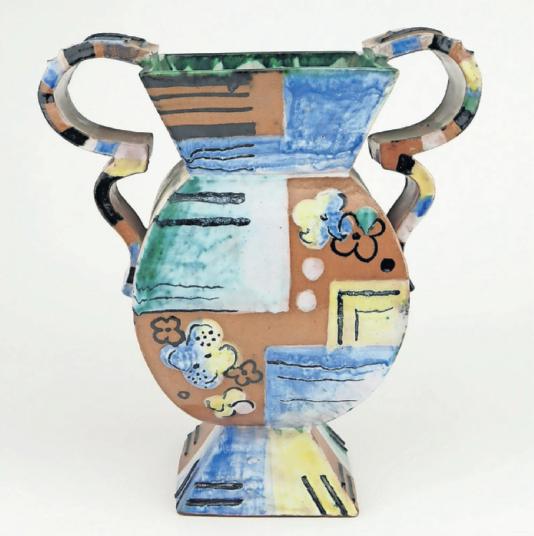
ducklings. From 1946 to 1948, the ducks had felt bills and were connected with wooden dowels. In 1948, a version with metal connectors was introduced. Starting in 1949, the ducks had plastic bills. The original retail price for the Quacky Family in 1940 was 50 cents. Today, they sell for about $25 to $50.
Q. I have a collection of over 100 small antique glass hats. Many of them are art glass. Can you tell me where I could sell them?
A. Many glass companies in the late 19th to early 20th centuries made small pieces shaped like hats. Sometimes they were sold as functional items like toothpick holders or miniature vases, but they were often decorative whimsies. Antique glass hats by famous makers or in rare colors or patterns can sell for high prices. For example, within the past year, a uranium glass hat with enamel flowers by the Mt. Washington Glass Works sold at auction for $150. If you believe you have
some valuable pieces in your collection, you may want to contact a dealer or auction house that specializes in art glass. There are many glass collectors’ clubs that may have more information, such as the National American Glass Club, glassclub.org. Depending on what kinds of glass you have, you may want to contact clubs for specific glass types or makers. Glass clubs often have shows and may be able to help you find specialized dealers or interested buyers.
Q. I have had a Widow’s Mite coin for more than 50 years. Can you tell me what it is worth?
A. The term “widow’s mite” comes from a Bible story where a poor widow’s donation of two coins is considered greater than anything given by the wealthy, because those small coins were all she had. The coins were presumably the lowest denomination circulating at the time, but there is much speculation among historians, Bible scholars and coin experts about what,
exactly, they might have been. The coin that is most often sold or collected as the widow’s mite is the bronze prutah or lepton minted under King Alexander Jannaeus of Judea, who ruled from 103 to 76 B.C. These coins are small, less than half an inch diameter, with an anchor on one side and star on the other. They were usually crudely struck and are often worn from frequent handling; they may have been in circulation for hundreds of years. This can make them difficult to identify and evaluate. Widow’s mites may be worth anywhere from about $20 to over $100. Condition and variations in design contribute to the value. If you would like a specific value for your coin or intend to sell it, we recommend contacting a reputable coin dealer in your area. Numismatics News, a sister publication of Kovels Antique Trader, has more information about coin collecting and values.
TIP: Put ceramic saucers or glass or plastic plant holders under vases of flowers or potted plants. There are inexpensive throwaway plastic dishes that have a rim and are exactly the right size and shape for a plant.
Kovels answers readers’ questions sent to the column. Send a letter with one question describing the size, material (glass, pottery) and what you know about the item. Include only two pictures, the object and a closeup of any marks or damage. Be sure your name and return address are included. By sending a question, you give full permission for use in any Kovel product. Names, addresses or email addresses will not be published. We do not guarantee the return of photographs, but if a stamped envelope is included, we will try. Questions that are answered will appear in Kovels Publications. Write to Kovels, The Republican, King Features Syndicate, 628 Virginia Dr., Orlando, FL 32803 or email us at collectorsgallery@ kovels.com.
Current prices are recorded from antiques shows, flea markets, sales and auctions throughout the United States. Prices vary in different locations because of local economic conditions. Royal Doulton, figurine, Bunnykins, Easter Greeting, bunny emerging from broken egg, raised hand, yellow shirt, grassy base, box, 1994, 4 inches, $25. Textile, bell pull, embroidered, flowers, pink roses, white daisies, scrolling leaves, gold tone trim, tassel, silk, 55 inches, $100. Sewing, kit, thimble, enameled scene, thread holder, silver case, pink enamel, guilloche waves, hallmarks, Norway, 2 1/2 inches, case, $205. Advertising, bin, McLaughlin’s Coffee, No. 99, dome top, multicolor graphics, coffee cup, leafy branch with berries, red trim, tin, 22 1/2 x 18 inches, $235.
Jewelry, pin, cameo, oval, shell, carved, woman’s profile, wreath in hair, diamond collar, filigree frame, four diamonds, 14K white gold, 1800s, 1 1/4 inches, $255. Paris, tureen, dome lid, rose finial, scalloped rim, underplate, cobalt blue, white interior, gilt trim, late 1800s, 7 1/2 x 9 1/2 inches, pair, $290.
Furniture, desk, writing, Mission, Stickley, oak, drawer between two shelves, slatted sides, stretcher panel, 30 x 42 inches, $470.
Cut glass, basket, rectangular, hobstar, cane, strawberry diamond, star, double notched handle, sawtooth scalloped rim, 8 x 8 1/2 x 7 inches, $540.
Candy container, glass, boat, swan, gold paint, rabbit, yellow chick, on water, molded, rectangular base, 2 x 4 x 1 inches, $560.
Furniture, mirror, Fratelli Barbini, glass frame, octagonal, etched bands, lattice, leafy scrolls, applied blown flowers, label, Vetri Murano, 47 x 39 inches, $1,510.
By A lex Veiga Associated Press
The average rate on a 30-year mortgage in the U.S. eased this week, though it remains close to its highest level in more than two months.
The rate fell to 6.81% from 6.83% last week, mortgage buyer Freddie Mac said Thursday. A year ago, the rate averaged 7.17%.
Autumn Y. Grimaldi and Daniel L. Grimaldi to Salvatore Sylvestor Circosta and Ezequiel Rivera, 22-24 Lealand Ave., $375,000.
DFG Property Group LLC, to Yeuri De Jesus Maria Lopez and Judy Duong, 131 Alfred Circle, $320,000.
Frank Kenney, representative, and Stephen M. Joseph, estate, to Tina Marie Wood, 10 Mansion Woods, Unit 10-D, $249,000.
Renu Rayonia and Rajesh Rayonia to 88 Agawam LLC, 1422 Main St., $450,000.
Claire H Goldsmith Revocable Trust, trustee of, Sandra L. Goldsmith, trustee, and Claire Helena Goldsmith, estate, to Anna Abshilava, 10C Mansion Woods, $259,900.
Sharon Dolan to Michelle Rose Noel Plante, 17 Mansion Woods Drive, Unit G, $278,500.
Sharon Henn to Kaan M. Cicek and Emine Cicek, 98 Parker St., $325,000.
Richard Bruce Pierce, Richard B. Pierce, Elaine Renaud Pierce and Elaine R. Pierce to Richard B. Pierce, trustee, Elaine R. Pierce, trustee, and Richard B. Pierce Revocable Trust, 63 Cherry Lane, $100.
Scott Kaplan to Ann B. Morse, 155 Farmington Road, $525,750.
Donald B. George Jr., Cynthia W. George, attorney-in-fact, and Cynthia W. George to Cynthia W. George, 135 Alpine Drive, $100.
Thomas C. Levy, Thomas Charles Levy, Haleya J. Priest and Haleya J.M. Priest to Thomas Charles Levy, trustee, Haleya J.M. Priest, trustee, Thomas Charles Levy Revocable Trust and Haleya J.M. Priest Re-
Borrowing costs on 15-year fixedrate mortgages, popular with homeowners refinancing their home loans, also fell. The average rate dropped to 5.94% from 6.03% last week. It’s down from 6.44% a year ago, Freddie Mac said.
Mortgage rates are influenced by several factors, including global demand for U.S. Treasurys, the Federal Reserve’s interest rate policy decisions and bond market investors’ expectations for future inflation.
After climbing to a just above 7% in mid-January, the average rate on a 30year mortgage has remained above
vocable Trust, 89 Pulpit Hill Road, $100.
Peter M. Mushovic, personal representative, Avis A. Mushovic, estate, and Avis Ann Mushovic, estate, to Thomas Burns and Khatuna Lomidze-Burns, 113 Glendale Road, $405,763.
William H. Ewell and Sara B. Ewell to Michael Hotard and Margaret Robinson, 15 Blue Hills Road, $749,000.
Jennifer Toppin to Jones Properties LLP, 977 North Pleasant St., $534,000.
West Amherst LLC, to UDrive Amity LLC, 25-35 University Drive, $1,200,000.
Kathleen M. Shea to Colton Skorupski and Jessica Skorupski, 777 Federal St., $430,000.
Plumtree Real Estate LLC, to Helen Austin, 23 Depot St., $430,000.
Joyce P. Levesque, Paul Levesque Jr., personal representative, Paul Levesque Sr., estate, and Paul A. Levesque, estate, to Scott Fournier and Kerry Fournier, 290 State St., $215,000.
Joyce P. Levesque, Paul Levesque Jr., personal representative, Paul Levesque Sr., estate, and Paul A. Levesque, estate, to Scott Fournier and Kerry Fournier, State Street, $50,000.
Kevin Shipee to Bubbas Construction LLC, 14 Maple St., $110,000.
Dominic Kirchner II, trustee, and Varakas Realty Trust, trustee of, to Jose R. Fernandez and Tiffany E. Boutiette, 55 Beauregard Terrace, $340,000.
6.62%, where it was just two weeks ago. It has risen sharply since then, reflecting volatility in the 10-year Treasury yield, which lenders use as a guide to pricing home loans.
The yield, which had mostly fallen this year after climbing to around 4.8% in mid-January, spiked earlier this month to 4.5% amid a sell-off in government bonds triggered by investor anxiety over the potential fallout from the Trump administration’s ongoing trade war.
The 10-year Treasury yield was at 4.34% in midday trading Thursday, down from 4.40% late Wednesday.
Equity Trust Co., custodian, Robert Lareau IRA, and Robert Lareau to Christina Henry, 111 Claire St., $352,500.
Michael A. Girard, Lisa M. Girard, Lisa M. Hazeltine and Lisa Lebeau to Christopher M. Knickle, 92 Ludlow Road, $405,000.
William P. Reed, George A. Reed and Joanne D. Reed to Francis R. Garrow and Ellen M. Garrow, 48 Richmond Way, $305,000.
Grace Elizabeth Nunez and Sarah Anne Nunez, personal representatives of the Estate of David John Nunez, “aka” David J. Nunez, to Paul Nicklin and Usha Pitts, 70 North Main St., $315,000.
Jeremy Ober to Manohar Lalchandani Jr., and Marina Lalchandani, 55 Eastern Ave., $650,000.
Curtis R. Brunelle and Zsazsa V. Brunelle to Franklin Pedroso and Maria Pedroso, 19 Swamp Road, $490,000.
Deborah A. Basile, trustee, and Basile Family Realty Trust, trustee of, to Francesca L. Tarbell, 353 Prospect St., $230,000. On The Mark LLC, to Derek Mark Ryder and Tania Levesque, 378 Elm St., $373,000.
Robert J. Schroeter to Amjad Real Estate LLC, 32 Hazelhurst Ave., $220,000.
Roman Catholic Bishop of Springfield to CTW Enterprises Inc., 35 Pleasant St., and 39-42 Pleasant St., $825,000.
Lower mortgage rates help boost homebuyers’ purchasing power, but they haven’t come down enough to encourage home shoppers at a time when real estate prices are still rising nationally, albeit more slowly.
Sales of previously occupied U.S. homes fell in March, posting the largest monthly drop since November 2022, as elevated mortgage rates dampened the start of the spring homebuying season.
Forecasts by housing economists generally called for the average rate on a 30-year mortgage to remain around 6.5% this year.
Claudia Molina-Pierce to David Rhodes and Jenifer June Rhodes, 48 Clapp St., and 48A Clapp St., $725,000.
Matthew R. Scranton and Megan Nicole Scranton to Anna C. Holley and Elizabeth J. Holley, 27 Pomeroy St., $475,000.
Sydney Snyder to Warren W. Snyder and Charles E. Snyder, 162 Taylor St., $100.
Alan C. Bronner, Lenard M. Bronner, Pamela C. Bronner, Pamela C. Bronner, personal representative, and Rene J. Bronner, estate, to Robert Flynn, 195 Batchelor St., $320,000.
Pioneer Valley Redevelopers LLC, to Jon Bander, 216 Elm St., $335,000.
Richard P. Ely and Ceridwyn E. Murphy to Bryan Bertram, 198 Wells St., $280,000.
Orion Pro Friend KP LLC, to PAAP Equities Inc., 200 Mohawk Trail, $2,950,000.
Tad J. Bassingthwaite to Waldy Felipe, 178 Fairview Street West, $310,000.
Brenda L. Keeley, Paul A. Jacques, Sandra L. Jacques and Stephen Gawronski to Thomas A. Oakley and Jeorgian K. Oakley, 45 Hickory Lane, $455,000.
Chris Lomascolo, trustee, Amy C. Lomascolo, trustee, and Lomascolo Family Trust, trustee of, to Robert A. Ross and Karen A. Thibeault, Glendale Road, Par B, $50,000.
Linda M. Courtney and John L. Newell to Linda M. Courtney,
trustee, and Linda M. Courtney Revocable Trust, 58 Main St., $100. RIPS LLC, to James S. Fusek, 228 Straits Road, $2,500.
James M. Votzakis, trustee, James M. Votzakis Revocable Trust, trustee of, Kirsten K. Votzakis, trustee, Kirsten K. Weissman, trustee, and Kirsten K. Weissman Revocable Trust, trustee of, to Kali Holdings LLC, 5 Inlet Drive, $459,000.
Highpoint Asset Management LLC, to Christopher Cruz-Ruiz and Santiago F. Jaraba-Chacon, 33-35 Hitchcock St., $335,000.
Mary E. Desmarais to Marjorie Dawn McNamara and Kimberly Kyoungho Koh, 22 Howard St., $335,000.
Timothy C. Lilienthal and Jennifer M. Berman to Madeline Nussbaum and Taylor Stocki, 201 Pleasant St., $450,000.
Cynthia R. Carlisle and Timothy S. Carlisle, trustees of the Revocable Indenture of Trust of Arthur E. Carlisle, to Caroline Beth Kipps and Paul Kennedy Kipps, 111 Amherst Road, $505,050.
David T. Keenan to Michele Miller, 36 Long Plain Road, $285,000.
Armando P. Ribeiro, Maria C. Ribeiro, Manuel P. Ribeiro, Elisete N. Ribeiro, Reinaldo P. Ribeiro, Maria A. Ribeiro, Antonio P. Ribeiro and Maria A .Jorge to Juan M. Kim-Rojas and Deny Kim, 14-16 Birch St., $325,000.
spection issues, what you do depends on your contract.
“If your inspection contingency allows you to request repairs or credits in lieu of repairs, then you can certainly ask for the seller to insulate these pipes,” Stokes said. “But all repairs or credits for repairs are generally negotiable between the buyer and the seller. It’s unlikely that the seller ‘must’ make this repair unless they want to satisfy the buyer so the contract does not become void.”
8: Some of the windows in the house are hard to open and close. The inspector couldn’t lock some of them, either. Is that a dealbreaker?
No. “Windows not latching are something that we come across all the time, particularly in homes with historic windows, but what is or is not a dealbreaker for anyone is a highly personal issue,” McNeill said.
Stokes said whether it’s a dealbreaker depends on the circumstances.
“Is the house a complete fixer-upper and the buyer is planning to replace all the windows anyway? If so then no, this is not likely to be a dealbreaker,” she said. “Is the house in a historic district where window replacements or repairs must be approved by a historic commission? If so, then the cost of repairing or replacing the windows could be extremely expensive and the buyer might think twice about proceeding with the contract.”
9: The home inspector said that when he filled the sink in the laundry room it was very slow to drain. He recommended getting a sewer scope done on the pipes before finalizing the purchase. Does the buyer pay for it?
Yes. “Buyers are responsible for all inspection costs,”
CONTINUES FROM PAGE F8
Kimberly A. Vigneault to Bay Flow LLC, 15 Loopley St., $179,000.
Steven J. Beauregard and Heather M. Francisco to Joshua M. Vieu, 19 Acorn Lane, $273,000.
Donna M. St. Pierre to Clark R. Zelazo, 0 Paradise Lake Road, $100,000.
Nancy C. Godbout, conservator for Eileen M. Steiner, to William R. Crosby, 75 Hillside Road, $87,000.
Karl Garbiel to Jeremy Rastallis, Greenfield Road, “aka” Old Greenfield Road, $25,000.
Stephen J. Sirum, trustee of the Diane Sirum Living Revocable Trust, to Christopher S. Brooks and Emily L. Waterfield, 334 Federal St., $480,000.
Simon J. Salloom and Jessica Salloom to Michael Even and Joan Keefe Even, 222 Elm St., $759,000.
Amanda Surgen, personal representative, Michael Surgen, personal representative, and Paul C. Surgen, estate, to Sarah Jeanne Chrysler and Noah Yoskowitz, 34 High St., $533,000.
Robert B. Upham and Joanne L. Sheardy to Margaret C. Ferrick and Stephen J. Ferrick, Ryan Road, $210,000.
Annette M. Greenwood and Douglas W. Greenwood to James Clarke and Sarah Greenwood, 637 Mount Hermon Station Road, $130,000.
Quiddlers LLC, to Orange OZ LLC, 136 New Athol Road, $685,000.
Dennis Piragis and Julie Piragis to John D. Miniter and Nancy F. Miniter, 250 Holtshire Road, $405,000.
Joyce Ann Stevens to David Duncanson, 212 Dana Road, $354,000.
Bryan J. Long and Ingrid F. Schatz to Holly Victoria Sanchez and Stephanie Andrea Smith, 64 Briggs St., $512,000.
Frank Mendelsohn to Jason M Rogers, 242 Old Warren Rd, $186,800.
Cornerstone Homebuying LLC, to Lindsay Whiting and Kristen Clausen, 338 Daniel Shays Highway, $515,000.
RUSSELL
Michael S. Milanczuk and Melissa A. Milanczuk to Alexandra Russell and Wyatt Heeter, 70 Old Westfield Road, $317,000.
ARPC LLC, to Jonathan Matthew Jamroga, 564 West Pelham Road, $431,000.
Raymond Laroche, Darlene Marcoux, Nancy Lee Laroche and Nancy Laroche to Jonathan Marcoux, 2 Edgewater Lane and 6 Edgewater Lane, $100.
Christopher M. Slemp and Bethany M. Lisi to Christopher M. Slemp and Bethany M. Lisi, 49 Dartmouth St., $100.
Donald M. Hayward and Sheila P. Hayward to Shannon T. Caney, trustee, and Donald and Sheila Hayward Irrevocable Trust, 86 Ridge Road, $100.
Rafael Alberto Castilla and Guadalupe E. Castilla to Rafael Espinar Castilla, trustee, and RGC Irrevocable Trust, 64 Amherst Road, $100.
Melissa L. Thomas to Annalise N. Hamel Acosta, 10 Joan St., $170,000.
Michelle L. Kisiel and Jean-Luc Godard to Daniel P. Taibbi, 246 Vining Hill Road, $380,000.
Stefanie Davignon to Zachary Wood, 36 North Lake Ave., $305,000.
Andrea M. O’Connor, receiver, and Spring Park Properties Inc., to Fabio Maquinze Goncalves De Souza, Fabio Souza and Rogeria Karina Vieira, 37 Chesterfield Ave., $232,000.
Andrea M. O’Connor, receiver, and Spring Park Properties Inc., to Fabricio Souza, 110 Spikenard Circle, $212,500.
Andrea M. O’Connor, receiver, and Spring Park Properties Inc., to Moises De Paula Vieira and Kessiane Sara De Souza, 54 Duryea St., $227,303.
Andrew J. Fox to BSD Care LLC, 1795 Main St., Unit 214, $65,000.
Autumn R. Perry and Danielle Elizabeth Perry to Brianna Doughty, 29 Rhinebeck Ave., $330,100.
Community National Bank, custodian, Geoffrey Thumma IRA, and Geoffrey Thumma to Posiadlosc LLC, 33-35 Claremont St., $220,000.
Craig Smith to Empyre Property Investments LLC, 174-176 Massasoit St., $204,995.
Everton G. Senior to JoeJoe Properties LLC, 416 Allen St., $215,000.
Flanders Homebuyers LLC, and Cream City Homebuyers LLC, to Corine Oliver, 54 Princeton St., $344,900.
Gabriella Phelan to Michael Mejia, 54-56 Suffolk St., $390,000.
H P Rum LLC, to VHSB Investments LLC, 56-60 Fort Pleasant Ave., $1,820,000.
Jesus Vazquez and Yesmarie Cotty to Vladimir E. Calderon and Diane M. Perez, 28 Birch Glen Drive, $280,000.
JJJ17 LLC, to Arnold Ogbac, 14 Dorchester St., $280,000.
Josefina Marte to Daniel Lopez Dias and Nancy Lopez Dias, 130 Hastings St., $279,000.
Mary C. Kaselouskas and Mary Catherine Kaselouskas to Michele T. Pepe, 471 Nassau Drive, $200,000.
Megliola Realty LLC, to Yeramell Alberto Cestarys and Vereniz Cestarys, 154 Denver St., $236,000.
Michael Karaskiewicz to ARPC LLC, 701 Parker St., $210,000.
Minyan Zhang, Wukui Zhang, Zhang Wenchuang and Dong Yan Ping to Mirna M. Bravo Barrios, 64 Beaumont St., $165,000.
Springfield College to Brian Patrick Adams, 26 Northumberland St., $270,000.
Watchmaker LLC, to SS Enterprises Inc., 568 Main St., $525,000.
Wicked Deals LLC, to Bubbas Construction LLC, 55 Massachusetts Ave., $283,000.
Yahina G. Caudillo to Judith Rivera, 132 Croyden Terrace, $240,000.
Joel Pentlarge and Robert K. Campbell to Juice It Up LLC, 29 Church St., $290,000.
Tallage Brooks LLC, to Manal Cruise, 65 West St., $85,000.
Denis Childs Jr., and April O. Childs to Sabrina Morris and Cody Morris, 276 Belchertown Road, $490,000.
Naples Home Buyers Trust, trustee of, Lucas Giusto, trustee, and Dominic Santaniello, trustee, to Esther Aguiar Clark and Adam Thomas Clark, 524 Dewey St., $339,000.
Anna M. Seekins to Haseen Mohideen Bawa and Sithy Jumana Haseen, 325 Holyoke Road, $380,000.
Armor Fire Technologies Inc., to Heidi L. Birchall, 1335 Southampton Road, $350,000.
Bridget A. Stearns, Bridget A. Fitzgerald and Timothy Fitzgerald to Amaree Negron, 22 Harold Ave., $266,500.
Eduard Loboda and Sulamita Loboda to Osman Nanic and Zijada Nanic, 16a Sunflower Lane, $299,000.
Joseph M. Deauseault to Elizabeth A Deauseault, 12 Green Pine Lane, $100.
Susan R. Barlow to Brian Barlow and Susan R. Barlow, life estate, 5 Bates St., $100.
Gerard J. Ronan, trustee, and Pine Island Pony Trust to I Belong Here LLC, 2 Pine Island Lake, $1,150,000.
Brett D. Kalish and Kellyn Anne Kalish to Patrick Roberts and Caitlin Roberts, 19 Westwood Drive, $530,000.
Clark Seibold and Stephanie Seibold to Justin Domenic Roberts and Heather L. Caisse-Roberts, 12 Primrose Lane, $525,000.
Deborah A. Allard, representative, and Shirley I. Woodard, estate, to Tyler M. Valinski, 10 White St., $375,000.
Michael E Lacoste and Kelly A Lacoste to Christian Michel and Meagan Michel, 160 Soule Rd, $625,000.
Charles E. Amo and Choice Builders & Modular Housing to John C. Marshall and Robyn E. Marshall, Old North Road, $55,000.
By Jessica Damiano Associated Press
IN 1872, A NEBRASKA NEWSpaper editor and tree lover named J. Sterling Morton proposed dedicating a day to planting trees in his home state. The idea, shall we say, took root.
That year, April 10 became the first organized Arbor Day, and approximately 1 million trees were planted in Nebraska. Two years later, Nebraska Gov. Robert Furnas proclaimed April 10 the state’s Arbor Day.
Other states soon set their own Arbor Day dates to coincide with the best time to plant trees there. And in 1970, President Richard Nixon declared the last Friday in April as National Arbor Day, although many
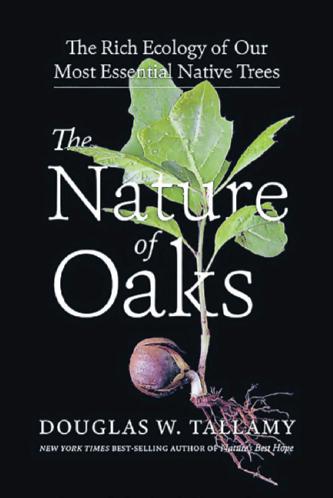
states continue to observe their own, which sometimes align with the national holiday.
If you plan to plant a tree this year, why not consider an oak?
“An oak is the best tree to choose because it is the No. 1 plant for supporting the food web, ” says University of Delaware entomologist and native plants champion Douglas W. Tallamy, the New York Times bestselling author whose books include “The Nature of Oaks.”
“Plants capture energy from the sun and, through photosynthesis, turn it into food — simple sugars and carbohydrates — that supports all the animals on the planet,” Tallamy explained.
“All life on Earth comes from energy provided by the sun,” he said. “But we can’t eat the sun. Plants allow us to do that. We’re essentially eating energy from the sun because plants capture that energy and turn it into food — and oaks are the ones that share the most energy with other living things.”
One reason oaks are so beneficial to the ecosystem is because, as native plants, they evolved alongside native insects, so those insects recognize them as food, Tallamy said. Oaks also belong to a large genus that’s been around for 56 million years, so wildlife has had a lot of time to adapt to them.
In all, there are 91 species of oaks across North America, so, he said, insects from coast to coast have adapted to them.
“A lot of people think they don’t have a property big enough for an oak,” Tallamy said, “but there are dwarf oaks, like Quercus prinoides, a dwarf chestnut oak.
And as you go farther west, there are a lot more dwarf oaks” to choose from.
Which oak do you want?
When selecting any plant for your property, it’s important to put the

right plant in the right place. So Tallamy advises matching up your soil type and growing conditions with an appropriate oak species.
“Some oaks like acidic soil,” he said. “There are oaks that like base soil. There are oaks that like rocky outcrops and ones that like bottomland.”
Consider, too, your hardiness zone and the sunlight exposure of the site.
“If you put an oak in the front yard in the mid-Atlantic states, for exam-
ple, it’s going to support 557 species of caterpillars, and all of those are crucial food sources for birds,” Tallamy said.
And I can’t think of a better reason to plant an oak this Arbor Day.
Jessica Damiano writes weekly gardening columns for the AP and publishes the award-winning Weekly Dirt Newsletter. You can sign up here for weekly gardening tips and advice.
CONTINUES FROM PAGE F9
Knull said. “But instead of a sewer scope, why not propose a home inspection deliverable for the seller that says, ‘Laundry room sink to drain properly at time of closing.’” Stokes recommends asking
the seller to investigate and clear the blockage, which could be something as simple as a clog. If it’s an older house without an obvious clog, then a sewer scope might be required to see if the main waste line for the house needs to be replaced. “These kinds of situations are when it is absolutely
critical to have knowledgeable agents representing both parties so the issue can be negotiated fairly and fully resolved so that no litigation issues arise post-settlement,” Stokes said.
10: The owners added a roof deck to a rowhouse in
D.C., but the home inspector said he didn’t see a permit or a final inspection for the project. Is there a way to make the sellers prove the roof deck is legal and up to code?
No. “Permit information is largely public information in D.C., so the buyer can see what records exist online
through the Department of Buildings portal,” Stokes said. “That being said, just because a permit was issued does not mean the deck is ‘legal’ or ‘up to code.’”
However, Knull said, if there’s a code violation citation that is active and unresolved, that is treated as a title issue that must be addressed.






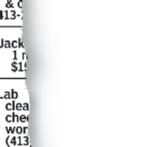

MORTGAGEES’ REAL ESTATE AUCTIONS TO BE SOLD ON THEIR RESPECTIVE PREMISE MONDAY MAY 5, 2025
9:00 AM - WESTFIELD, MA 191 MUNGER HILL ROADDEPOSIT $10,000


the auction. The
paid within thirty (30) days at the law offices of Korde & Associates, P.C. 900 Chelmsford Street, Suite 3102, Lowell, MA 01851, Attorney for the Mortgagee. Auctioneer makes no representation as to the accuracy of the information contained herein.

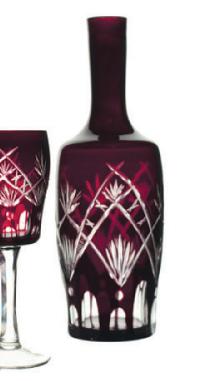
TERMSOFSALES:DEPOSITSINTHEAMOUNTS SPECIFIEDABOVEARETO BEPAIDBYTHEPURCHASER(S)ATTHETIME ANDPLACEOFEACH SALEBYCERTIFIEDOR BANKCHECK.ALLBALANCESDUEARETOBE PAIDWITHIN30DAYSOF EACHINDIVIDUALSALE. OTHERTERMS,IFANY, TOBEANNOUNCEDAT EACH SALE. CALL OUR AUCTION SCHEDULE LINE AT (617) 964-1282 FOR A LIST OF THE CURRENT DAY’S AUCTIONS AND VISIT OUR WEBSITE www.commonwealth auction.com FOR CONTINUOUSLY UPDATED SCHEDULING INFORMATION AND ADDITIONAL SCHEDULING INFORMATION COMMONWEALTH



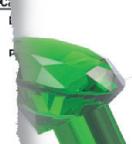


By Jolie K err
The Washington Post
SOCIAL MEDIA IS AWASH with clever kitchen gadgets that you never knew you needed until you find yourself mesmerized during a late-night scroll session. Bag sealers, cup washers and peanut butter stirrers are among the items that show up with a cutesy “TikTok made me buy it” hashtag.
One such product, a cutting board and knife set hailed as “self-cleaning,” is a real attention-grabber. It’s very cool looking, for one, and the idea of a self-cleaning anything is wildly attractive, even to people who like to clean. Who among us hasn’t fretted that our cutting board is harboring cooties after slicing a raw chicken breast or trussing an uncooked pork loin?
But how, exactly, does this self-cleaning cutting board work? More important: Does it work? To find out, we bought a set (TikTok made us do it!), used it to prepare raw meat, vegetables and cooked foods, and spoke with a food safety expert about sanitizing and disinfecting food prep surfaces, to find out if it lives up to its dazzling social media promises.
How did the self-cleaning cutting board and knife set perform as a kitchen tool?
Cutting board and knife sets abound, each offering slightly different features and configurations, but most come with: plastic cutting mats, usually with a designation for use (i.e. raw meat, vegetables, cooked foods, etc.) to prevent cross-contamination; knives, scissors, honing steels and other tools; a stand fitted with a fan, a heating element and UV lights for storing everything; and a removable electrical cord.
We examined a $119 set from Charmline. Its slim mats are on the small side, measuring 12.5-by-8.5 inches, and the bulky 14.5-by-11by-4.5 holder takes up a chunk of valuable counter real estate, but a countertop solution for holding food prep tools may be appealing to someone looking for convenience, or who lacks kitchen storage space. Taken as a whole, the unit is an attractive buy for someone who is starting their cooking tools collection from nothing; the cutting boards are a sturdy plastic, and their size makes them perfect for small
are everywhere. But do they work?
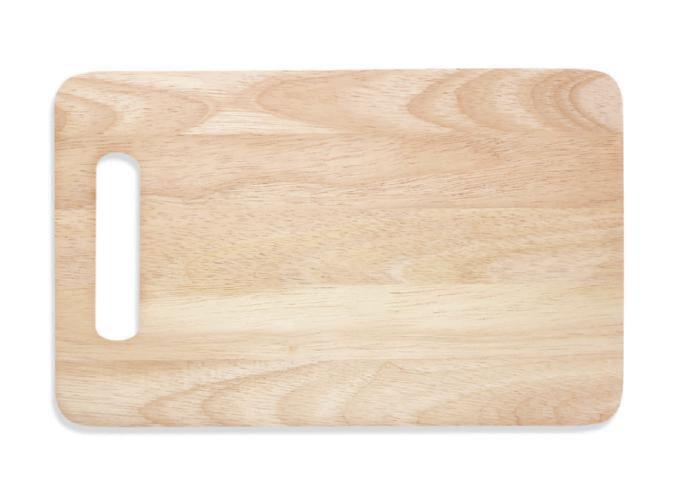
A wooden cutting board. (ADOBE STOCK IMAGE)
jobs like chopping a jalapeño (not too big) and for bigger ones like slicing a chicken breast (not too small). The knives have bulky handles, and while the blades cut well, they simply aren’t as comfortable to use as my own collection of knives — if you already have knives you like, this would not be a purchase I’d recommend.
Surprisingly, the kitchen scissors proved to be the standout among the blades. They’re supersharp, and I’ve found myself reaching for them over and over again while my poor old ceramic blade scissors look on in horror at my cruel abandonment.
Is a self-cleaning cutting board and knife set too good to be true?
Yes, it is. Isn’t that such a letdown?
The issue here is one of marketing: What’s being presented to consumers as “self-cleaning” is actually self-drying and, in theory, self-sanitizing because the heating element, UV light and ozone gas in the stand are designed to neutralize any bacteria lingering after the boards and knives have been washed — washed by you, as you are the self who actually cleans these “self-cleaning” items.
To use the self-cleaning cutting boards and knives, start by washing them by hand with hot, soapy water. Then, the user manual instructs, lightly dry them before placing each piece in its slot in the base. From there, there are four options: You can dry, heat and/or sanitize the pieces for intervals of 10 to 40 minutes.
effect,” in which UV light is blocked from making contact with a surface. Shadowing prevents the UV light from reaching and eliminating bacteria and viruses on surfaces that are not entirely flat. In the case of these particular cutting boards, Schaffner points out that the design features a groove around the edge and a raised section for grating, both of which would cause shadowing that would prevent UV sanitization from occurring. “It’s not magic,” Schaffner says of UV sanitizing. “And if you’re going to make a device like this, I would expect the manufacturer to have done the research to show that it actually works.”
As for the ozone sanitizing function, “certainly, you can sanitize surfaces with ozone,” Schaffner says. “The question is, does it actually exist in this little device? And I think the answer is probably no.”
The unit does not, however, allow for control over the individual functions, so you can’t opt for just the drying or just the ozone setting.
Does the device actually sanitize and disinfect food prep tools?
The heating function, according to the product specs, reaches 70 degrees Celsius/158 degrees Fahrenheit. Donald W. Schaffner, a professor of food science at Rutgers University, says this is probably sufficient to sterilize cutting boards and knives after use. “My gut feeling is, yes, it would [sanitize]. Because those are plenty long enough times, I feel that would certainly help,” Schaffner says, but adds a caveat: “Whether it meets the EPA definition of sanitize, I would like to see data.”
While we can quantify, to some extent, the efficacy of the heating function to sanitize cutting boards and knives after washing, the details of the UV light and ozone functions are difficult to determine. The user manual provided by the manufacturer refers to the light as “the strong light of disinfection,” and the online description says simply “UV disinfection” and “ozone disinfection” but does not specify the type of UV light or ozone gas used. Charmline did not respond to an email asking for more information on the UV and ozone sanitizing functions.
Schaffner explains that while UV sanitizing definitely works, it is unlikely that this particular application would be effective because of what’s known as the “shadowing
Do we recommend this set? No. It wasn’t bad, per se, but there’s no particular merit to it either. The self-cleaning function is minimally helpful, the knives and cutting board are fine but not great, the storage unit is bulky, and the whole thing is expensive. Good scissors, though.
The right way to clean and disinfect cutting boards and knives
Cutting boards made of dishwasher-safe plastic or glass should be washed in the dishwasher; the high heat washing and drying cycles will clean and sanitize the boards more effectively than washing by hand. “If you have an automatic dishwasher,” Schaffner says, “put them in the automatic dishwasher on a sanitized cycle.”
Cutting boards that cannot go in the dishwasher, as well as knives, which should not go in the dishwasher, can be sanitized with a mild household bleach solution. To disinfect wood and bamboo cutting boards, as well as plastic or composite boards that are not dishwasher-safe, make a mild bleach solution of one tablespoon of unscented liquid chlorine bleach and one gallon of water. Submerge and soak the board for two minutes. Then, wash the board with hot, soapy water, rinse it well and dry it with a clean dish towel. Always dry a cutting board immediately after washing with a clean dish towel, rather than allowing it to air-dry, to prevent bacterial growth.